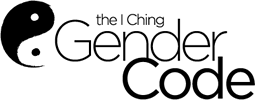Your Hexagram is not a test or an assessment. It does not reflect anything from the past or into the future. These two do not exist. The idea of change is that it can’t be the same forever. Nothing is forever. A test pins you down, and implies permanency. The Hexagram simply represents the present situation. Each line in the hexagram corresponds to a question about either your biology or gender. There are 6 questions in total: 3 about your biological state and 3 about your gender in this present moment. Each answer will generate a line. The possible lines are Yin, Yang, Becoming Yin and Becoming Yang (Read more about the lines here) Answer the questions honestly, and keep in mind that things always change. It is the nature of everything. (in other words – don’t tattoo the hexagram on your body.
-
Hormones:
Hormone production changes throughout our lives. In some variations, a person with ovaries can produces predominantly testosterone (Intersex). Children before puberty are all in a state of “Yang”. In our middle-age, hormone levels start to decline and the states “flip”. Transgender people or women during menopause might undergo Hormone Therapy. In either case, please select the predominant hormone currently in your system.
-
Physique:
Physique is how the world perceives us. Some of us are constantly addressed as “sir” or “ma’am”. These are usually judgments that are made within the context of culture. Long hair, broad shoulder, curves, angular features are all part of what each culture considers either feminine or masculine.
-
Gender:
1. Personal Gender Statement
This part of the Hexagram relates to the way you perceive yourself regardless of your biology. The terms “male” or “female” relate to biology and are not used in this section. Instead, we use the terms “masculine” and “feminine” to express the opposite ideas derived from the concept of gender. Keep in mind that even though we have our statement about ourselves, it is always within the context of the society, culture, place and time we live in. At times, we may shift between feeling masculine and feeling feminine, even though society might not accept the expression of such shifts. Answer as you are in this present moment.
-
2. Emotional
Emotional state and our internal world can be a subject of a whole new hexagram. Here we look at a general state of being at this moment. Do you feel expressive and want to connect with others, or are you an observer and introspective right now. In this moment, I feel: (select the option that best describes you currently.)
-
3. Gender Expression
Dressing-up is how we present ourselves to the world. Society dictates what is considered masculine and feminine fashion. Dapper and Metro are terms that describe masculine, yet refined fashion. Wanting to wear accessories, jewelry and make-up is considered feminine today, whereas in the 16th century it was also acceptable for men to wear tights, wigs and make-up.
